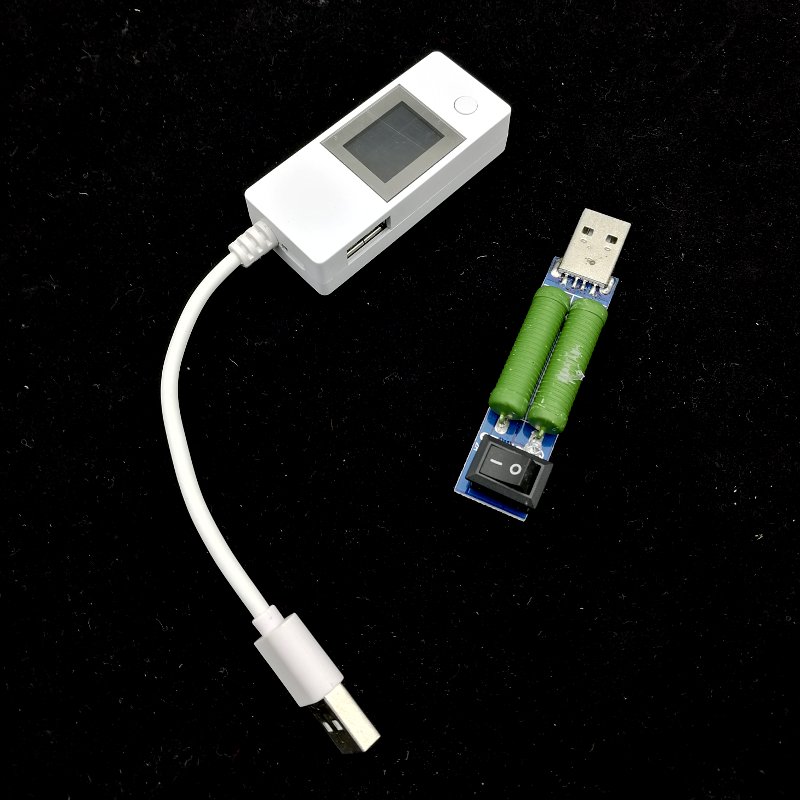
USB Current/Voltage Tester and Diagnostic Tool
The Universal Serial Bus (USB) is widely used for connecting peripheral to computers, battery charging and powering devices. Most consumer gadgets such as mobile phones, tablets and cameras have USB interface. Single board computer such as the Raspberry Pi uses USB interface for power.
There are times when you have doubts and want to know more about your USB devices. When you suspect you have a power supply problem or you are wondering whether you are getting what you paid for your USB charger or even when you want to check the power output of your newly constructed solar panel.
Questions like these always came to mind:
- This USB charger has 2A rating; does it able to deliver it?
- What is the actual capacity of my mobile power battery?
- How much current does my Raspberry Pi need with additional peripherals?
- My mobile phone is not charging; where is the problem? The charger, the cable or the phone?
This little tool is useful for performing diagnostic test for your USB power source, cables and devices. In essence, this tool sits in between you power source and your device. It measures voltage, current and battery capacity. We use it all the time for "debugging" any power related problem with USB interface. The main unit has a nice and bright LCD for readings display. Next to it, there is a single push button for control.
There are two options for power input connection. You can either use the short Type A USB cable attached to the main unit or micro USB port. Connect the input port to the USB wall outlet or computer and the reading will be displayed instantly. The power output connection uses Type A female USB port. There are two of them. Connect the output to your device (load) using your USB cable. For power transfer/charging, use USB1 port. For power and data transmission, use USB2 output.
This tester supports up to 20V. This is useful to test the latest "fast charging" device which uses more than the standard 5V USB charging.
Resistive load device
To read current and discharge capacity a load is needed. We include a resistive load device so that you can perform your test easily.
This device plugs into a USB port to simulate a 1A or 2A (approximate) load. The device has 2 load resistors, an operational LED and a switch. You can change the load to ~1A or ~2A by flipping the switch. This device is useful especially when you want to test your power supply or battery capability.
Caution:
The resistive load device gets hot very fast. Avoid touching it during testing. Do not perform your test near flammable material. It is not advisable to leave it connected for a very long time. Remember to unplug it after your test is done!
Use Case
Check power supply quality - Plug the USB connector to the USB power source and plug the resistive load to the other end. Voltage and current reading are shown on the display. For example, if the power supply is rated 5V and 2A, flick the 2A switch on the resistive load and it should reflect close to it on the reading. You will know if your power supply can deliver the rated output or not.
Check micro USB cable quality - First plug the tester directly to the power source, take note on the voltage value. Then, plug the micro USB cable in between the power source and the tester. You will see the voltage value dropped due to the cable. A good cable will have only a small voltage drop.
Measure portable battery capacity and efficiency - Connect the portable battery to the tester. Long press the tester's button to clear data for the next set. Connect a load to the tester and wait until the portable battery discharges completely. The battery capacity reading is recorded and you will see the last data the next time you connect it to a power source.
Technical details:
- Display:
- Voltage
- Current
- Capacity (10 sets of data)
- Input voltage: 4 - 20V DC
- Input current: 10 - 4000 mA
- Input connector: USB type A plug or micro USB port
- Output voltage: 4 - 20V DC
- Output current: 10 - 4000 mA
- Voltage Resolution: 0.01V
- Current Resolution: 0.01A
- Capacity range :0 - 99999mAh
- Measurement accuracy: ± 1%
- Output connector: 2x USB type A jack
- Dimension: 64 x 27 x 16 mm, cable length: ~130 mm
